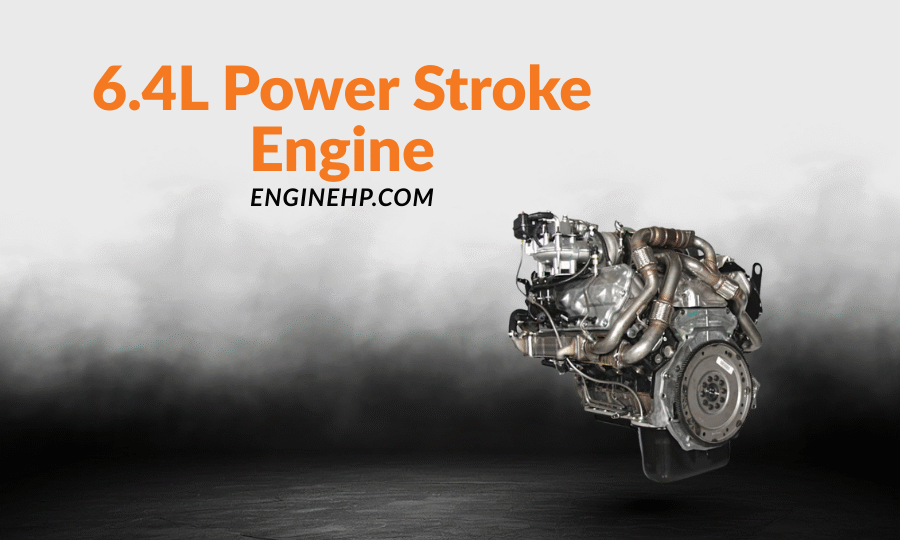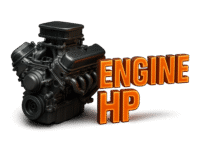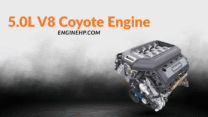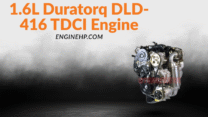
Ford Engines: 6.4L Power Stroke Engine Hp, Reliability, and Performance
It was designed with lots of horsepower and torque in order that it would outperform the 6.0L and meet stricter emission regulations. However, despite being powerful, it quickly became famous as a fuel-inefficient vehicle and required numerous costly repairs.
However, here’s the thing: If you know how to handle the engine and know how to handle the 6.4L, the 6.4L is a solid, reliable companion for both truck and business owners. Let’s examine what people think and dislike about this engine.
Origins of the 6.4L Power Stroke
The 6.4L Power Stroke V8 turbo-diesel was released in 2008 and took over the spot of the 6.0L which was plagued by problems. Navistar International made it, and its mission was simple: fix the 6.0L’s reliability issues while making it more efficient and less polluting.
The initial Power Stroke to have two turbochargers operating sequentially as well as diesel particulate filter (DPF) to be standard to comply with the more severe EPA regulations. It was the perfect blend of modern technology and pure power on paper.
The 6.4L was designed to be a symbol as a whole as did the M40B16 Engine that is smaller and is known for its stability and user-friendliness. The M40B16 was successful because it was easy to use, while the 6.4L was built on intricacy.
Power & Performance: The Highlights
The 6.4L Power Stroke was the most powerful Ford diesel ever made when it first came out.
| Manufacturer | International Truck and Engine Corp. |
| Production years | 2008-2010 |
| Cylinder block material | Cast iron |
| Cylinder head material | Cast iron |
| Fuel type | Diesel |
| Fuel system | Common rail direct injection |
| Configuration | V |
| Number of cylinders | 8 |
| Valves per cylinder | 4 |
| Valvetrain layout | OHV |
| Bore, mm | 98.2 mm (3.87 in) |
| Stroke, mm | 105.0 mm (4.13 in) |
| Displacement, cc | 6,400 cc (389 cu in) |
| Type of internal combustion engine | Four-stroke, turbocharged |
| Compression Ratio | 17.5:1 |
| Power, hp | 350 hp (261 kW)/3,000 |
| Torque, lb ft | 650 lb-ft (881 Nm)/2,000 |
| Engine weight | 1130 lbs (512 kg) |
| Firing order | 1-2-7-3-4-5-6-8 |
| Engine oil capacity, liter | 14.2 l (15 qts) – with oil filter |
| Engine oil weight | SAE 10W-30 Super Duty Diesel Motor Oil or equivalent, SAE 15W-40 Super Duty Diesel Motor Oil |
| Oil recommendations and capacity may vary depending on the car model, year, and market. Please check the service manual specific to your vehicle! | |
| Oil change interval, mile | 10,000 (15,000 km)/6 months |
| Cars with this engine | Ford F-250, Ford F-350, Ford F-450, Ford F-550 |
This made towing simple for drivers, particularly at low rpm, where torque is the highest. Twin-turbo technology made it possible to accelerate with minimal delay, just like being a sprinter, and the endurance of an endurance athlete.
The 6.4L was able to carry massive loads on roads without the need to shift constantly. It was especially popular with transporters, farmers and construction firms who required constant torque.
Reliability: The Double-Edged Sword
The 6.4L Power Stroke fixed some issues that were present with the 6.0L however, it also made the job more difficult. It was more well-designed however it was also well-known for its poor gas mileage and high repair costs.
Excellent points:
- More powerful inside The crankshaft made of forged steel and block’s strong design helped the engine last for longer.
- Twin-Turbo Power provides you power both at high and low speeds.
- The less noise is much more efficient and smooth than the 6.0L.
The weak points
- The majority of owners claimed to get 10-12 miles for every gallon of fuel, particularly when the car was full.
- The emissions system can be blocked easily and cause it to operate less effectively.
- Troubles with the cooling system Radiators and EGR coolers are often damaged.
- A damaged radiator, or DPF system can cost thousands of dollars.
The distinction is apparent when you look at the maintenance-intensive 6.4L against the M40B16 Engine. M40B16 Engine. The M40B16 Engine requires minimal maintenance and reliability, while the 6.4L requires lots of attention, but provides a significant amount of power.
Why Buyers Still Consider the 6.4L
The 6.4L Power Stroke still has lots of people who love it, even though it’s not a popular model. Here’s why:
- Affordable Used Market: A Used Market that is affordable, trucks equipped with 6.4L engines are less expensive than those equipped with 6.7L engines, making them attractive to those with a tight budget.
- Raw power: 650 lb-ft torque is a significant amount of power to haul.
- Aftermarket Repairs: There’s an industry that is devoted to “bulletproofing” the 6.4L to ensure it is more reliable and efficient in its job.
- The Enthusiast: Many tuners are enthralled by the 6.4L as it is able to produce lots of power through adjustments. Certain models are capable of pushing more than 800 HP with the right turbo and fuel systems.
The 6.4L is a possible fun truck engine for those who don’t like working on it or investing in upgrades.
Business Perspective: Risk vs. Reward
For businesses, uptime as well as costs per mile is more crucial than pure power. In the 6.4L Power Stroke had different impacts on fleets:
- Pros: It’s able to tow many times, is smooth and has good low-end torque that can be used for moving things.
- Advantages: Poor fuel efficiency and costly time to repair due to pollution.
For example an engineering firm that hauled large trailers each day may have enjoyed the power, but constant DPF issues and 10 mpg of fuel economy resulted in a high cost of operation.
This is why comparing it with engines like that of the M40B16 Engine helps put things in perspective. Businesses generally are more concerned with efficiency and reliability than raw power or complexity.
Real-World Scenarios
Towing and hauling
The 6.4L is great for towing trailers weighing up to 14,000 pounds across long distances. Many owners praise its performance even under stress.
Road Driving
It’s comfortable and stylish however it might not be as efficient in terms of fuel consumption as other vehicles.
Conditions at Work
It’s useful in farming and construction since it can produce a lot torque even at lower speeds. However, if the cooling system was not improved and the temperature was too high, overheating problems were typical.
Comparison With Other Power Stroke Engines
- 7.3L Power Stroke (1999-2003) is known for reliability, but not as powerful as the 7.3L Power Stroke (1999-2003).
- 6.0L Power Stroke (2003-2007) It is strong but not very reliable.
- 6.4L Power Stroke (2008-2010) It has more power and refinement, however it consumes lots of gasoline and is expensive.
- 6.7L Power Stroke (2011-present) It is new, powerful, efficient, and reliable, however it costs an enormous amount.
The 6.4L is known as the “middle child.” It’s more powerful than the 6.0L however it is not as efficient or as long-lasting like the 6.7L.
Maintenance Tips for Longevity
If you own or wish to purchase the 6.4L Power Stroke it is important to ensure it is taken care of in advance:
- Pay attention to the levels of coolant If you notice water leaks, it could mean the radiator is leaking or EGR is causing problems.
- Make sure you take care of the DPF regularly: Remove clogs and force regens.
- Each 5,000-mile interval, replace the oil. Synthetic oil of high-quality makes the injectors last for longer.
- Install aftermarket modifications such as stronger head gaskets and radiators and EGR removal kits (where is permissible) in order to help make your vehicle more efficient.
- Pay attention to the efficiency of your fuel. Rapid decreases can indicate problems in problems with the DPF and injector.
Who Should Buy It?
- People who are in love with it The 6.4L is an excellent location to play if enjoy tuning and improving.
- Buyers with a tight budget If you’re willing to invest in upgrades, lower costs make it attractive.
- Small-sized companies can be a great option if you require lots of power and are willing to pay more for maintenance.
Who wouldn’t? people who want vehicles that don’t require much maintenance and provide excellent gas mileage. Engines such as those of the M40B16 as well as Ford’s 6.7L Power Stroke are the best for them.
FAQs About the 6.4L Power Stroke
1. How long will the 6.4L power stroke last?
The majority of them last between 250,000 and 300,000 miles, with upgrades and attention However, stock models typically had issues sooner.
2. What is the reason why the 6.4L has such poor gas mileage?
With dual turbos and substantial emissions technology, this car consumes more fuel and averages 10-12 mpg.
3. Can you create a 6.4L solid?
Yes. It gets more secure with improvements that make it bulletproof such as more powerful radiators EGR strategies, and improved head gaskets.
4. How does it compare with its M40B16 engine?
M40B16 Engine is easy, effective and durable. The 6.4L engine however is a good source of power from diesel, but requires more attention.
5. Do you think it is worth the price now?
Yes, provided the price is reasonable and the product was previously modified. However, buyers must reserve funds for repairs that could be required.
Conclusion: The Legacy of the 6.4L Power Stroke
The 6.4L Power Stroke engine is an extremely powerful machine, but it is difficult to understand. It was surprisingly fast and smooth for its time however it wasn’t able to achieve a high fuel efficiency and cost much to maintain.
It’s a diesel monster with plenty of options for those who wish to make improvements. It’s an appropriate risk for corporations because it’s a powerful engine, but costly. It’s like comparing it with that of the M40B16 Engine. It can teach us a more important knowledge that simple things prevail, while often, complex things earn us unique advantages.
The 6.4L isn’t a disaster but it’s an under-appreciated workhorse that could still perform admirably if you care for it.










Leave a Reply